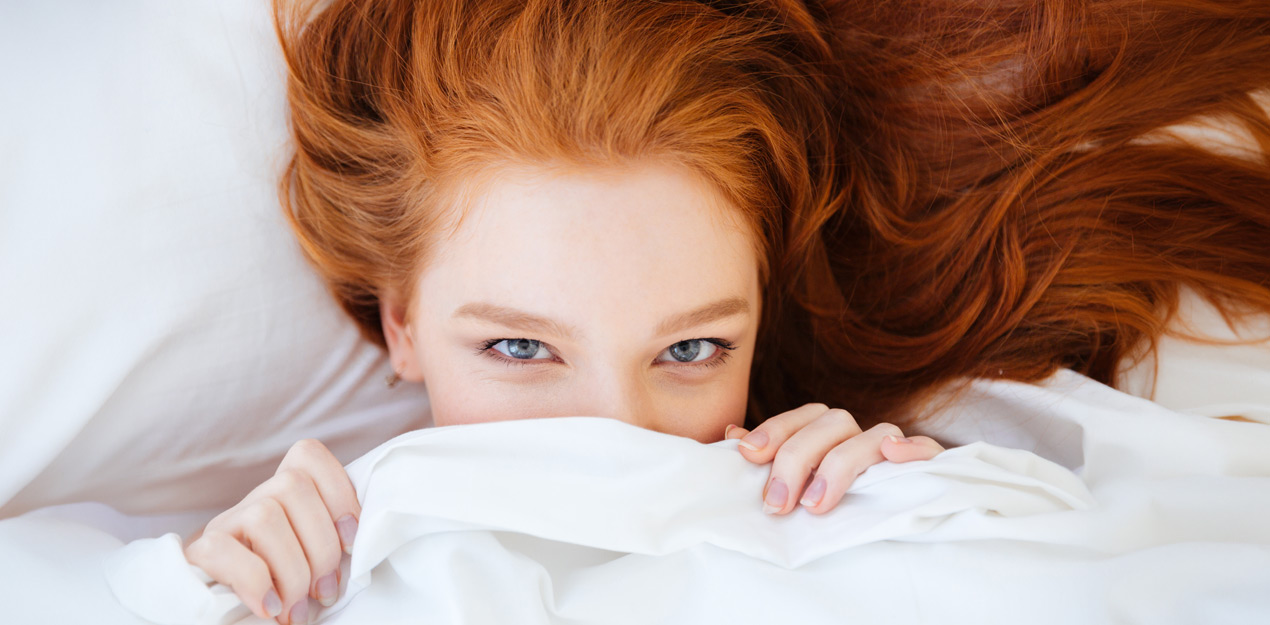Skipping a daily shampoo doesn’t have to mean sacrificing style. Waking up with “bed head” is a common challenge, but with the right techniques you can quickly rejuvenate your hair and step out looking polished and professional. This guide breaks down easy next-day hair fixes for straight, wavy, and curly hair types. You’ll find practical tips – from smoothing techniques to curl-refreshing tricks – all designed to minimize effort and hair damage while achieving an expert-level finish.
Understanding Bed Head: How Sleep Affects Your Hair
Overnight, your hair can go from sleek to shambles thanks to a few factors. The main culprit behind classic bed head is friction – as you toss and turn, your strands rub against the pillow, causing tangles, frizz, and odd bends in your hair. Coarse fabrics like cotton can rough up the hair cuticle, leaving you with matted or kinked sections by morning. Additionally, going hours without movement allows your hair to set in whatever position you slept in, often creating an unintentional “cowlick” or flat spot.
Different hair types experience bed head in unique ways:
- Straight hair may become flat and oily at the roots, with random dents or flips where it pressed against your pillow.
- Wavy hair might lose its uniform wave pattern and turn puffy or frizzy in areas that got rumpled.
- Curly hair tends to dry out and flatten, as curls lose moisture overnight and don’t retain their definition. Without intervention, curls can look squashed or frizzed by day two.
The scalp’s natural oils also play a role. By the second day, oils have started to travel from your scalp down the hair shaft, which can make roots look greasy while the ends stay dry. This imbalance often exaggerates bed head – oily roots cause clumping or limpness, whereas dry lengths amplify static and frizz.
Can bed head be prevented? To some extent, yes. Hair professionals suggest securing your hair before sleep to reduce friction and lock in your style. For example, one stylist recommends tying hair up in a loose top knot or braid, or wearing a silk bonnet, to keep it in place overnight . Silk or satin pillowcases are another favorite trick – they reduce the rough friction that causes bedhead and frizz . While you may not eliminate morning mess entirely, these tricks can make your hair much easier to refresh come morning.
Smoothing Out Straight or Slightly Wavy Hair
Second-day straight (or lightly wavy) hair often needs help with two things: oily roots and uneven shape. The goal is to revive volume at the scalp, eliminate greasy or flat spots, and smooth out any bends – all without a full wash. Here’s how to do it:
- Absorb Oils with Dry Shampoo
Dry shampoo is your best friend on non-wash days. It soaks up excess oil and adds a touch of lift to limp roots. Lift sections of your hair and spray a dry shampoo (such as Fresh Do Dry Shampoo from The Collection) onto the roots from about 6–10 inches away. Focus on the crown, hairline, and any areas that look separated or piecey. Remember to spray in short bursts, not one spot for too long. Let the dry shampoo sit for a minute or two so it can absorb grease. Then massage your fingertips on your scalp or use a brush to distribute the product and brush out the powder. This instantly makes your hair look and feel cleaner. In fact, making sure your hair is as clean as possible at the roots before styling is crucial – applying heat to oily hair can literally “cook” the oil and damage your strands, so don’t skip this step if you plan to use hot tools. - Smooth Bed-Head Kinks and Cowlicks
Now address any sections of hair that dried in a funny shape overnight. Inspect your strands for flattened areas, random flips, or a stubborn cowlick sticking up. Instead of re-straightening all your hair, target only the sections that need help – this saves time and minimizes heat exposure. Lightly mist those unruly bits with water or spritz a heat protectant (for example, Armor Flat Iron Spray) to dampen them slightly. For cowlicks or dented pieces, a quick blast of heat will reset their shape.You have two options:
Flat Iron Fix
For a quick fix on straight hair, clamp a flat iron over the crimped section at a moderate temperature. Glide it through the strand once or twice until it lays flat. Always use a heat protectant spray beforehand to shield your hair from damage and to add a touch of smoothness and shine. Armor Flat Iron Spray or similar products create a protective barrier so your hair doesn’t singe under the iron. Remember, you’re just touching up here – if the rest of your hair is in good shape, leave it be and flat iron only the pieces that truly need it.Round Brush & Dryer
If you prefer, use a blow-dryer and a round brush to reshape sections (this is great for adding a little volume too). For example, if the ends of your hair flipped outward while you slept, wrap those ends around a round brush and blow-dry on medium heat as you roll the brush under. Aim the dryer downward for smoothness. For a cowlick at the crown or front, dampen the section and use the hair dryer while brushing that piece in the desired direction. A few seconds of warmth will coax your hair back into place. Once it’s laying correctly, hit that section with a cool blast of air to set it.
- Add Volume and Finish
One downside of second-day straight hair is that it can lack the bounce of freshly washed locks. To perk it up, try this professional trick: flip your head upside down and give your roots a quick blow-dry on low heat while fluffing with your fingers. You can also use your fingers or a brush at the roots to lift the hair as you blow-dry, which helps boost volume at the crown. (Don’t overheat the ends – they likely don’t need it.) Flip back up and gently comb your hair into place. If you notice any dry or frizzy ends, rub a tiny drop of lightweight hair serum between your palms and smooth it over just the tips for polish. Be sparing; too much can weigh the hair down now that it’s not freshly washed.
With roots refreshed and stray hairs smoothed, your straight or softly wavy hair should now look clean, smooth, and naturally voluminous. A quick mist of light-hold hairspray can be used if you want a little extra hold or flyaway control, but in many cases it won’t be necessary once everything is tidied up.
Revitalizing Naturally Wavy or Curly Hair
Wavy and curly hair often feels completely different on day two. Curls might lose their spring and definition, turning limp in some spots and frizzy in others. This happens because curly hair is typically drier (natural oils have a harder time traveling down curls), and it can lose moisture overnight, causing increased frizz and dullness . The good news is you don’t need to rewash or completely restyle to bring your curls back to life. With a bit of water and the right product, you can refresh your natural texture quickly:
- Lightly Mist with Water
Start by rehydrating your curls with a fine water mist. Fill a spray bottle and spritz your hair all over, focusing on the mid-lengths and ends where your curl pattern is most disturbed. Do not soak your hair – you just want it slightly damp, not dripping. (If you drench it, the curl pattern can collapse and you’ll be waiting forever for it to dry.) A light mist is enough to awaken yesterday’s styling products in your hair and make curls more malleable again. - Apply a Curl-Enhancing Product
Once your hair is lightly damp, apply a touch of curl refresher or leave-in conditioner to restore moisture and shape. A curl-defining cream, such as Curl Cream from The Collection, works great here. Take a small amount (about a dime or nickel-sized dollop, depending on hair length) and scrunch it into your curls. Focus on the areas that are frizzy or have lost their form. The product will help re-establish your curl pattern and reduce frizz as it dries. For extra-definition, you can also twist individual curls around your finger (a technique called “finger coiling”) while the hair is damp with the product. This encourages each curl to spring back into a nice coil. - Scrunch and Air-Dry (or Diffuse)
After applying the curl cream, continue to scrunch your hair gently upward toward the scalp. This helps the curls remember their shape. At this point, you have two options: you can let your hair air-dry for a bit if you have time or use a diffuser attachment on your blow-dryer. Diffusing on low heat and low airflow will speed up drying without blowing your curls out of shape. In fact, using a diffuser on a low setting can enhance definition and minimize frizz. Cup sections of your hair in the diffuser and bring it towards your scalp, drying in sections. Whichever drying method you choose, avoid touching your curls too much as they dry, since that can create frizz.
Once dry, your curls and waves should look revived – more bounce, better definition, and a lot less frizz. Resist the urge to brush your dry curls, as that will break them apart. Instead, if you need to shape your style, use your fingers to gently position curls or tame any one or two pieces with a touch more curl cream.
Professional tip: Don’t overload day-two curls with heavy products like oils or strong gels. Applying heavy, greasy products at this stage can weigh down your curls and make them look limp or oily. Stick to lightweight, water-based stylers for your refresh. The goal is to revive the curl, not drown it in product. If you find your hair still needs a little hold, choose a light curl mousse or a spritz of flexible hairspray rather than a heavy wax or gel.
Quick Touch-Ups: A Step-by-Step Morning Routine
When you’re short on time, follow this quick step-by-step routine to tackle common bed head issues for any hair type. These steps will help you go from pillow-induced chaos to a put-together style in just a few minutes:
- Assess and Detangle
Upon waking, take a moment to gently detangle your hair. Use a brush on straight or wavy hair and use your fingers or a wide-tooth comb on curly hair to remove any obvious tangles. This gives you a clear view of what you’re working with. Identify the major issues: Are your roots oily? Any obvious flat spots, kinks or frizz clusters? By pinpointing these, you can target your fixes (and avoid messing with the parts that still look fine). - Address the Roots – Dry Shampoo Time
If your roots are greasy or flat, start here. Part your hair in sections and spray dry shampoo at the roots wherever needed – usually along the front, crown, and any oily patches. Hold the can a good distance (8–10 inches) away so you get an even, fine mist. After spraying, give it a minute to work its magic. Use this time to prep the next step. Then massage the dry shampoo into the scalp with your fingertips and brush out any excess. This step alone lifts your hair and makes it look freshly washed by absorbing oil and adding volume. (Tip: In the future, you can even do this step the night before. Applying dry shampoo before bed lets it absorb oil as it forms, so you wake up with cleaner-looking roots.) - Rehydrate and Reset Curls (if applicable)
If you have wavy or curly hair, take your spray bottle and lightly mist your lengths and ends. Focus on the areas where your curls have flattened or frizzed. Remember, just a light mist – your hair should be damp, not soaking. Scrunch the water in a bit, then work a small amount of curl cream or leave-in conditioner through those sections to redefine the curls. Give them a few good scrunches or twist coils around your finger to encourage the pattern back. If you’re straight-haired or your style is a blowout, you can skip this step, though a very light mist on a frizzy section won’t hurt. (For example, sometimes just misting and finger-combing that one weird bend in your hair can relax it without even needing heat.) - Smooth with Targeted Heat
Now turn to any stubborn styling problems – perhaps a chunk of hair that’s sticking out, creased bangs, or a rogue cowlick. Rather than re-style your whole head, use heat only where truly needed. Spray a bit of heat protectant (like Armor Flat Iron Spray) on the section you plan to heat style. For general kinks or unruly pieces, a flat iron does the trick: run it over the section once or twice until smooth. For areas where you want a bit more volume or bend (like face-framing pieces), use a round brush and blow-dryer to shape them as described earlier. Always follow with a cool shot from the dryer to set the shape. Keep the heat at a moderate level – you’re aiming to polish the hair, not fry it. Important: Ensure any section you’re ironing is dry or only slightly damp from the protectant. Never flat iron wet hair and try not to apply a hot tool on sections that still feel oily. (If you did step 2, oily sections shouldn’t be an issue – the dry shampoo will have taken care of that. Remember, heat + oil is a bad combo for hair health.) - Refresh Your Bangs (if you have them)
Bangs often need special attention on day two. They sit against your forehead and can get greasier and limper than the rest of your hair. To revive bangs quickly, first use a touch of dry shampoo at their roots. Lift your fringe and spritz underneath, focusing at the scalp where they tend to separate or cling. Let it sit a minute, then gently brush through your bangs. If your bangs are creased or sticking up, don’t panic – lightly dampen them with a bit of water or a heat-protectant spray, then blow-dry while brushing them into place (a small round brush is perfect for this). Roll the brush under the bangs and aim the dryer downward from above, which helps them lay smooth. It only takes a few seconds of heat. Once dry, give them one more quick brush or even a finger tousle to settle them. They should be back to looking fresh, with no piecey oiliness or odd bends. As one hair expert notes, a little dry shampoo can save you from having to fully re-wash and restyle your fringe every day – a huge time-saver! - Finishing Touches
Step back and take a final look. Smooth down any flyaways with a light hair serum or even a tiny bit of leftover curl cream on your fingertips. If the rest of your hair is looking a bit dull, you can mist a shine spray sparingly for a glossy finish (optional). Finally, if your style tends to fall out during the day, set it with a light-hold hairspray. Otherwise, you’re done! Your hair should now look clean, polished, and styled – and only you will know it only took a few minutes in the morning.
By following these steps, you tackle the major problems (oil, frizz, flattening) in a logical order – roots first, then length, then specific trouble spots – which is much faster than trying to restyle everything from scratch.


